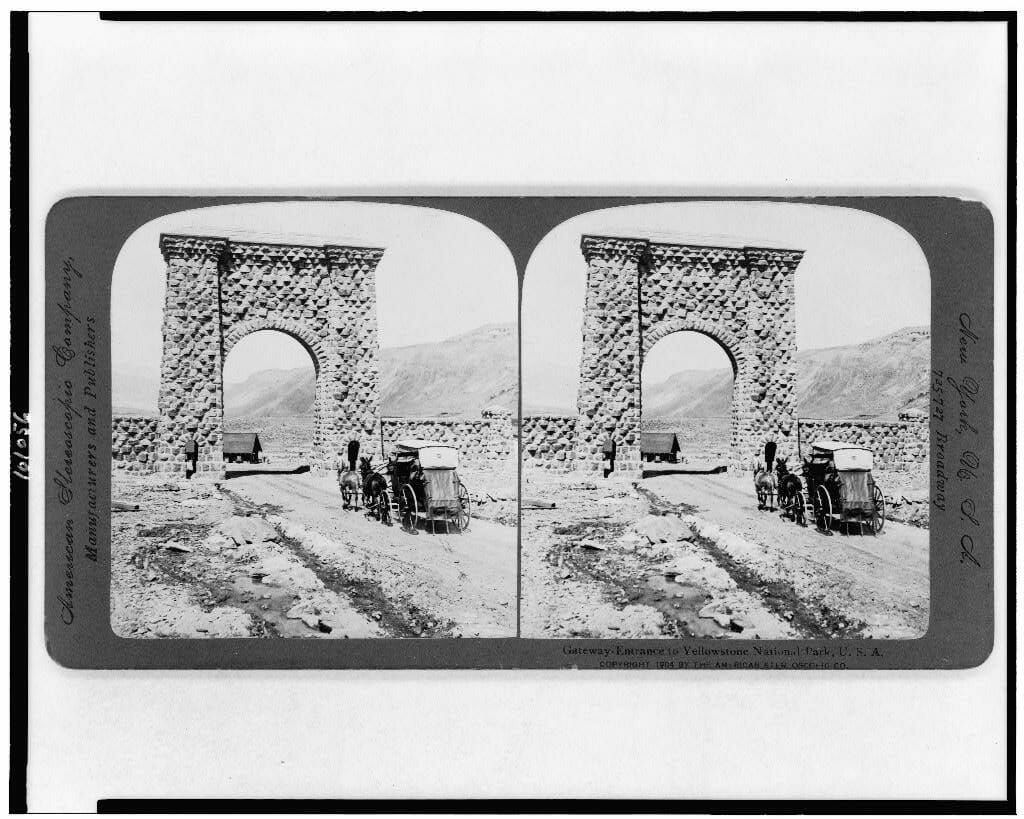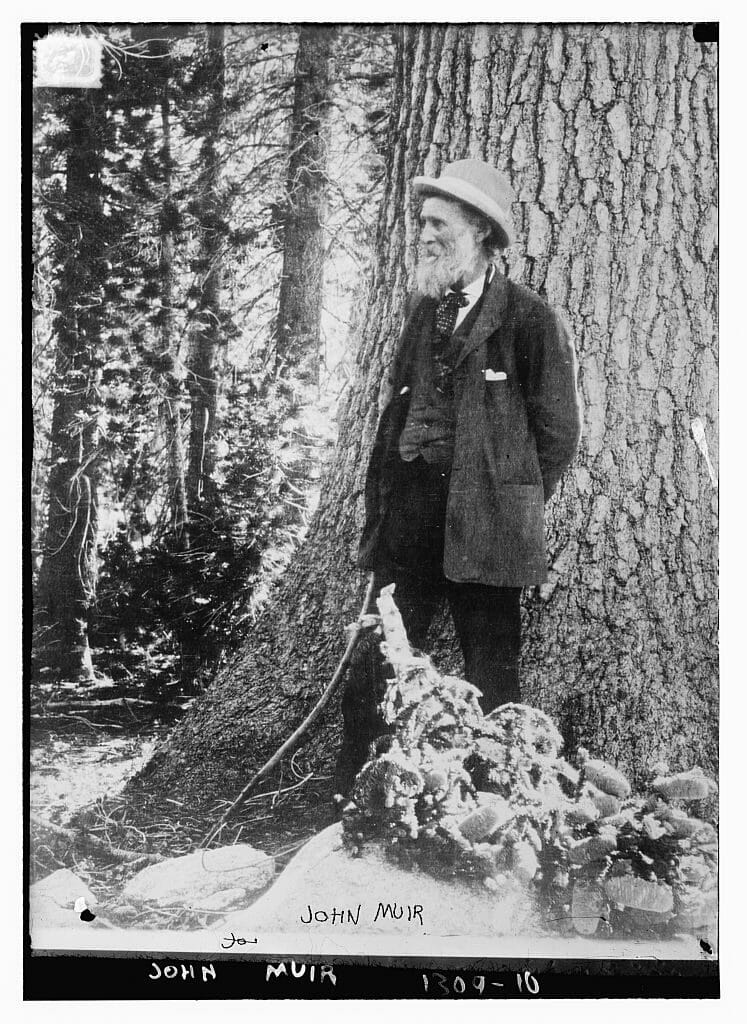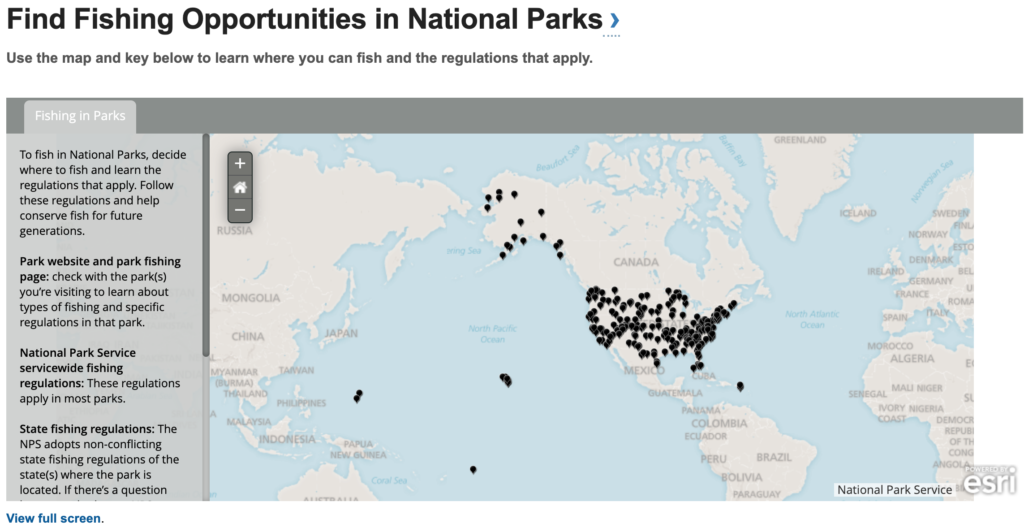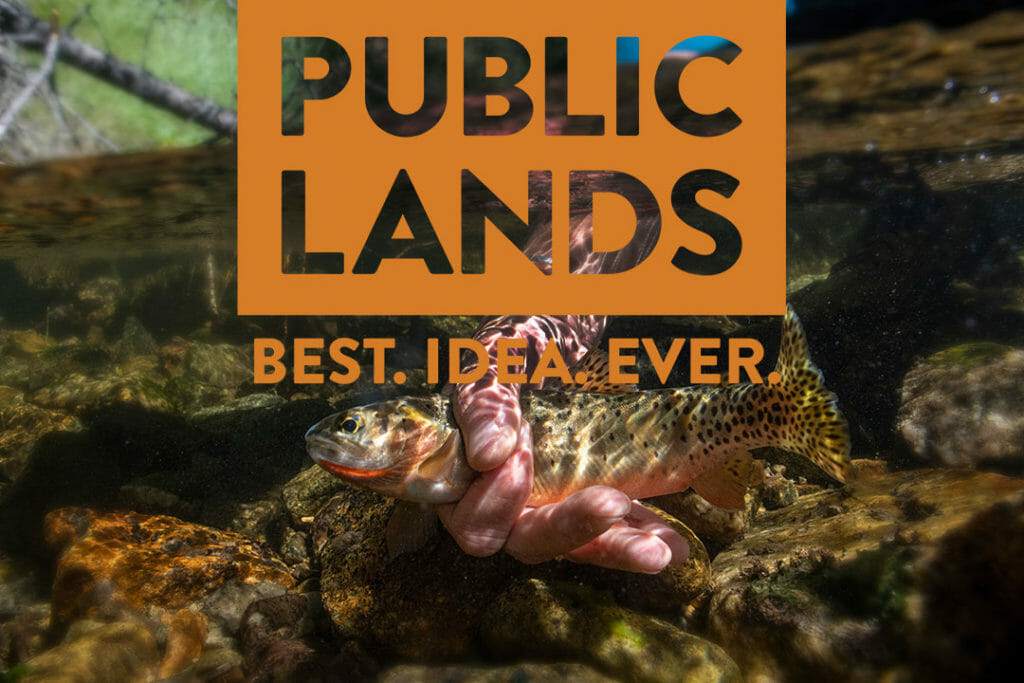
Trout Unlimited is devoting the month of September to celebrating public lands and the agencies dedicated to upholding America’s public land heritage. It’s no coincidence that National Hunting and Fishing Day and National Public Lands Day are both during September — the month is tailor-made for hunters and anglers to enjoy all that public lands have to offer.
Join us this month as we get to know the agencies who manage our public lands and we explore special places around the country. Stay tuned to TU.org, Facebook, Instagram and Twitter for updates, contests and opportunities to take action. Most of all, get out this September and enjoy your public lands!

. New York: American Stereoscopic Company, manufacturers and publishers. Photograph. Retrieved from the Library of Congress, <www.loc.gov/item/90709689/>.
By Corey Fisher
“For the benefit and enjoyment of the people.”
These are the words etched into Roosevelt Arch at the north entrance to Yellowstone National Park, established in 1872 as the world’s first national park. Forty-four years later Congress passed legislation creating the National Park Service and today the agency manages more than 419 areas covering more than 84 million acres in all 50 states, as well as the District of Columbia and U.S. territories. While National Parks like Yosemite and Glacier often come to mind when thinking of the Park Service, numerous designations fall within the agency’s jurisdiction, including both areas set aside for natural values, as well as those with historical significance. National preserves, national battlefield sites, national memorials, national seashores, and certain national monuments are just a few of the types of units within the Park Service. The largest area managed by agency is the 13.2 million acre Wrangell–St. Elias National Park and Preserve in Alaska while the smallest is the Thaddeus Kosciuszko National Memorial in Pennsylvania, a .02 acre site dedicated to the Revolutionary War military engineer.
Purpose and Mission
In 1926 the Park Service’s organic act established the agencies mission “to conserve the scenery and the natural and historic objects and the wild life therein and to provide for the enjoyment of the same in such manner and by such means as will leave them unimpaired for the enjoyment of future generations.”
The wide range of units makes the Park Service the most diverse federal land management agency in the country. This also necessitates adapting the mission to serve the primary purpose for any given unit — managing the Lincoln Memorial is much different than Yukon-Charley Rivers National Preserve, yet the Park Service does it all, for all Americans. Additionally, specific legislation creating individual units oftentimes create statutory management requirements and purposes.
Unlike the Forest Service and Bureau of Land Management, the Park Service has no multiple use mandate, meaning that activities like oil and gas development, logging and mining are generally not allowed. In this way, Park Service lands are typically provided a higher degree of protection than other public lands. However, balancing preservation with recreation has remained a challenge as the popularity of national parks has increased.

. [No Date Recorded on Caption Card] Photograph. Retrieved from the Library of Congress, <www.loc.gov/item/2014686853/>.
History
In many ways National Parks are a product of the conservation movement that emerged in the mid-19th century. A reverence for nature was a key element of Transcendentalism, with writers like Henry David Thoreau and Ralph Waldo Emerson exploring the essential value of the natural world to humanity. Thoreau famously wrote that “in wildness is the preservation of the world” and in his essay Nature, Emerson said that “in the presence of nature, a wild delight runs through the man, in spite of real sorrows.” The idea that nature helps make us whole and that society must preserve some wild places for future generations began to take hold as these writings influenced early environmentalists.
“In the presence of nature, a wild delight runs through the man, in spite of real sorrows.”
Ralph Waldo Emerson, “Nature”
By the late 19th century and early 20th century, advocates like John Muir would win protection for some of America’s special landscapes, including in Yosemite, the Grand Canyon and Mount Rainier. In 1903 Muir would host President Roosevelt on their now famous camping trip to Yosemite, influencing the President’s conservation policies and earning his respect. Roosevelt later wrote that “our generation owes much to John Muir.” Efforts to establish a system of protected American lands come to fruition with the passage of the Park Service’s Organic Act in 1916.
Over the next century, the Park Service would evolve and face new challenges as the agency strived to balance preservation with the country’s growing appetite for recreation. A number of Congressional acts and executive orders would continue to shape policy for the Park Service and redefine the park system. In 1933, President Roosevelt issued a pair of executive orders stipulating that the Park Service was to be responsible for managing all federally owned parks, monuments, military parks, national memorials the National Capital Parks and eleven national cemeteries, greatly expanding the Park system.
Later, the General Authorities Act of 1970 amended the Organic Act and helped to unify the park system, declaring that all units of the Park Service are part of “one national park system preserved and managed for the benefit and inspiration of all the people of the United States.” In 1980, the Park Service would expand dramatically again with the passage of the Alaska National Interest Lands Conservation Act, which more than doubled the size of the Park Service by adding 44 million acres of new national parks and preserves.
Today national parks are more popular than ever with annual visitation topping 300 million. This demand to experience America’s natural wonders must be balanced with the need to preserve these treasures for future generations. This challenge is compounded by a maintenance backlog approaching $12 billion, a problem all land management agencies face as Congress debates options for funding the management and conservation of our public lands.
Hunting and Fishing Opportunities
Given they wide-ranging types of designations that are managed by the Park Service, hunting and fishing opportunities are varied and sometimes subject to site-specific regulations that can differ from state regulations. By law hunting is not allowed in national parks, although hunting is allowed on certain other system lands, including national preserves such as Gates of the Arctic in Alaska, as well as many national lakeshores, such as Apostle Islands in Wisconsin. In all, recreational hunting is allowed on sixty-six areas managed by the Park Service.

Fishing is allowed in numerous units managed by the Park Service. From catching native cutthroat trout in Yellowstone National Park, to brook trout streams in Great Smoky Mountains National Park in Tennessee, to the famed fishing of Alaska’s Lake Clark National Park and Preserve, an angler could spend several lifetimes fishing our national parks. Lucky for anglers (even the unlucky ones), the Park Service has created a handy website including an interactive map to find fishing opportunities in your national parks.



